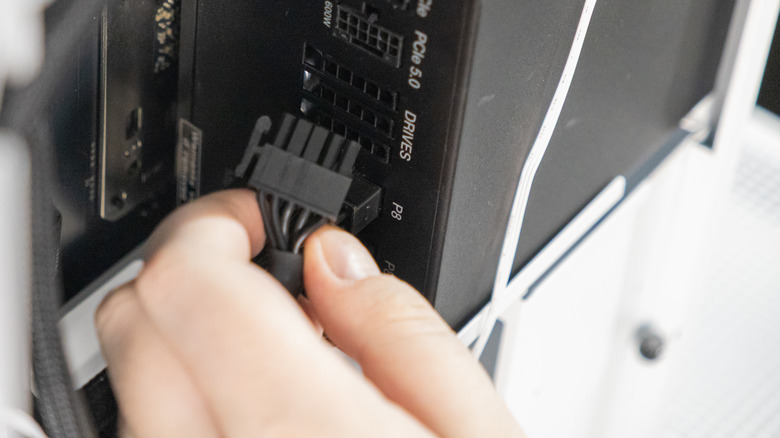Can You Upgrade A Pre-Built PC? The Answer May Not Be That Simple
Upgrading a pre-built PC sounds like a practical way to extend a computer's lifespan and enhance its performance. At first glance, it seems like it would be an easier undertaking than building a PC from scratch. After all, most of the work has already been done for you. Unfortunately, it's not always a straightforward process, especially if you're using an off-the-shelf model from one of the big brands like Dell, HP, or Lenovo. Pre-built PCs often use custom components designed specifically for a particular PC model to optimize space, reduce costs, and control the system's design. This can often make it difficult — or extremely expensive — to make upgrades, as even if you can find a part that fits, your PC might have an insufficient power supply to drive it. You may also need to make adjustments to your PC case if it's too small to house new parts.
To avoid costly or time-consuming mistakes when upgrading your PC, check your model's specifications on the manufacturer's website. This will help you understand your PC's specifications and any limitations you might face. User forums and YouTube are great places to troubleshoot specific issues you're having, as other people are likely to have encountered them, too. You can also seek advice from tech professionals if you feel out of your depth. Of course, anything is possible if you are willing to throw enough time and money at it. The trick is to understand which upgrades are worth doing and which ones will be more bother and expense than simply buying a better PC, or even building one yourself.
Memory and storage upgrades are often relatively straightforward
Some parts of a pre-built PC, like RAM or storage drives, are often easier to upgrade than others. You can significantly boost performance by installing more RAM or replacing old hard disk drives (HDDs) with solid state drives (SSDs). Desktop computers usually have multiple RAM slots on the motherboard, allowing you to upgrade or replace memory modules. However, in rare cases — especially in compact or budget pre-built systems — some RAM may be soldered directly onto the motherboard, limiting upgrade options. You should check how much RAM your motherboard supports and whether it uses removable modules. This guide walks you through the right way to install RAM in your PC.
Another relatively easy fix is replacing HDDs with SDDs. Hard disk drives use spinning magnetic disks to store data, while solid state drives use flash memory, making them faster, more durable, and more energy-efficient. Although many modern PCs only have SSDs, older models use both HDDs and SSDs.
If you're going to replace your PC's HDD with an SSD, you first need to check what kind of connections your system supports. Most pre-built desktops will support SATA or M.2 SSDs. SATA will usually fit into the same mounting space as your old HDD. M.2 SSDs are smaller, faster drives that plug directly into the motherboard. Some M.2 slots support SATA M.2 SSDs, while others support NVMe M.2 SSDs, which are generally much better. If your motherboard doesn't support NVMe, you may still be able to use an adapter in a PCIe slot.
Other upgrades might be a bit trickier (or practically impossible)
While upgrading RAM or storage might be relatively straightforward, other upgrades to pre-built PCs are not so easy. Power supply units (PSUs) are a common sticking point. Many budget and mid-range pre-builts use non-standard PSUs with unusual shapes or connectors, which can make replacing or upgrading the PSU difficult, especially if you need more power for a new graphics card. Even when a new PSU fits physically, it may not work with a proprietary motherboard without adapters. Higher-end or gaming-focused systems are more likely to use standard components and support easier upgrades, but you'll need to check the manufacturer's specs for your particular machine. If you're purchasing a new PSU, we recommend buying new rather than used.
Another hurdle is the BIOS. Many pre-built systems come with locked BIOS settings that limit your ability to tweak hardware, like enabling high-speed RAM, adjusting fan curves, or activating virtualization. These restrictions aim to reduce support issues, but they can prevent you from optimizing performance after upgrades. While some users try to unlock hidden BIOS options, doing so carries risks, including voiding the warranty or damaging the motherboard. Graphics card upgrades are usually possible, but may require a PSU swap or case adjustments. CPU upgrades depend on motherboard compatibility and BIOS support.
While upgrading a pre-built computer may be technically possible, in many cases it might be more trouble than it's worth. If you plan to make changes that will end up costing more than building a computer from scratch, you may want to rethink your strategy.


